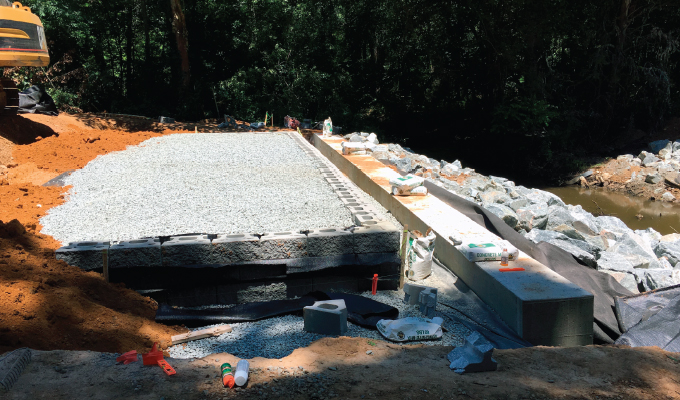By Michael Close, M.S., P.E.
Frequently, an owner agency releases a letting for a bridge replacement or rehabilitation utilizing tried-and-true solutions without knowing that more innovative or cost-effective methods are available. If the owner is open to value-engineered proposals, then creative ideas and alternatives proposed to the original design may be the contractor’s avenue to increased profits while providing a superior solution. However, the contractor has no incentive to propose innovation without a contractor-friendly and rewarding value-engineering process and an agency open to new ideas. Even when it would extend the service life, improve the traffic level of service, increase safety, or lower the project’s overall cost.
The key driver to all this is innovation. What concepts can the contractor bring to the table to extend service life, shorten the construction schedule duration, lower the construction cost, and provide value to the owner agency? Herein lies a primary reason why the design-build concept is gaining momentum—rapid innovation can be easily incorporated into construction projects. Regardless of the contracting mechanism, the contractor needs to bring new ideas to the table.
Specialty contractors often provide the pioneering concepts that drive this innovation. These companies have engineering staff and state-of-the-art tools devoted to providing solutions to specific applications outside the realm of typical general contractors. In most cases, these specialty contractors will perform the preliminary engineering necessary to determine the feasibility of an alternative or two and provide drawings as part of a submittal package for an owner agency to consider.
GEOTECHNICAL ALTERNATIVES
The dominant repair solution for failing bridge, culvert, and retaining walls is to take the structure out of service and completely replace it with new construction. In most cases, loss of the bridge or retaining wall results in traffic detours, stability problems for buildings above the failing structure, permitting delays, and project duration from months to years. Using design-build contracting and value-engineered designs, a contractor can rehabilitate the failing structure in place, thereby avoiding or mitigating these problems.
Technologies developed for geotechnical construction applications can be applied to these repairs in innovative ways. Soil nails can be drilled through the existing facing and anchored into the soil behind the structure. Micropiles, installed with limited-access equipment in areas unreachable with other equipment, can underpin walls to transfer vertical loads and can be battered to withstand horizontal forces. Grouting technology can improve soil properties, carry loads, and provide increased shear strength for slope stabilization. Reinforced shotcrete can be applied with soil nails over any façade, timber, stone masonry, concrete, or steel. The original surface acts as the form with a layer of shotcrete applied directly over it for increased stabilization. Then, the shotcrete can be troweled smooth to look like cast-in-place concrete or stained and sculpted to look like a natural stone outcropping or a stacked stone masonry wall.
Another cost-effective innovation is a Geosynthetic Reinforced Soil (GRS) wall. This type of wall is comprised of closely spaced layers of geotextile or geogrid and stone backfill. It can be used for a wide variety of applications ranging from bridging over soft soils, transferring loads to deep foundation elements, to building retaining walls that behave more like gravity walls than Mechanically Stabilized Earth (MSE) walls. Federal Highway Administration guidance shows these structures can carry loads above 20,000 psf with little internal consolidation settlement under load. Unique geometries, including negatively battered walls (made possible by a cantilever effect of closely spaced layers of a geosynthetic and stone), have been constructed and satisfactorily load tested using strain gages and load cells.
BRIDGE REPLACEMENT EXAMPLE
Recently a local county government faced the prospect of replacing a single-span road bridge. Wanting to use county labor forces to reduce costs, a contractor worked with the county engineer to design and construct the bridge abutments. A Geosynthetic Reinforced Soil-Integrated Bridge System (GRS-IBS), constructed using closely spaced layers of geotextile and stone supporting spread footings, was chosen and built. A bridge beam supplier delivered the bridge beams, and these were placed atop the newly fabricated abutments. The beam supplier provided a design for the beams and the deck. The county decided to set the abutments back away from the water crossing and protect the new abutments with riprap, a row of scour protection micropiles, available from a specialty contractor, tied together with a micropile cap (see photo). While the county could have set the abutments directly on a micropile foundation closer to the stream, this value-engineered approach reduced the total project cost.
CLOSING THOUGHT
Contractors can bring the traveling public safe, innovative, cost-effective solutions to everyday applications if allowed a contractual and financial mechanism to work within. All parties can collaborate in a mutually beneficial, trusting relationship utilizing new ideas and methods to the taxpayer’s benefit. Design/Build/Warranty contracting, which places the solution’s success squarely on the contractor’s shoulders, allows the owner to enjoy an innovative solution with the knowledge that a warranty exists in the remote case of an issue arising after the project finishes.
- Design and Construction Guidelines for Geosynthetic Reinforced Soil Abutments and Integrated Bridge Systems; Publication No. FHWA-HRT-17-080, June 2018
- Deep Patch Repair, Phase 1: Analysis and Design, Report No. FHWA-WFL/TD-12-003, March 2012
About the Author:
Michael Close is a project development engineer at GeoStabilization International. With more than 20 years of industry experience, he specializes in slope stabilization, and bridge repair and rehabilitation projects. For more, visit www.geostabilization.com.
Modern Contractor Solutions, September 2021
Did you enjoy this article?
Subscribe to the FREE Digital Edition of Modern Contractor Solutions magazine.



